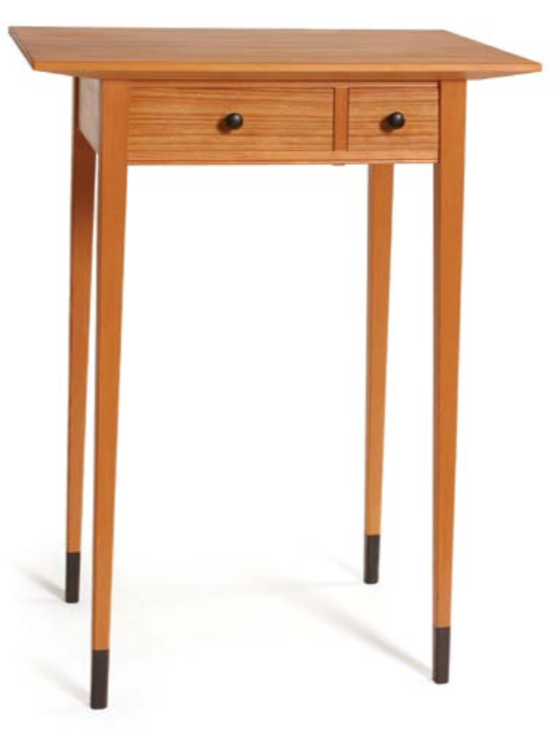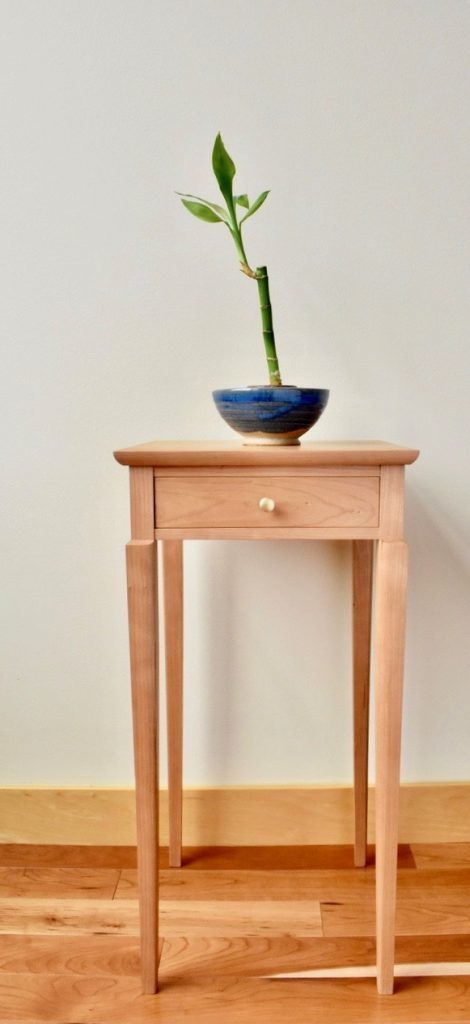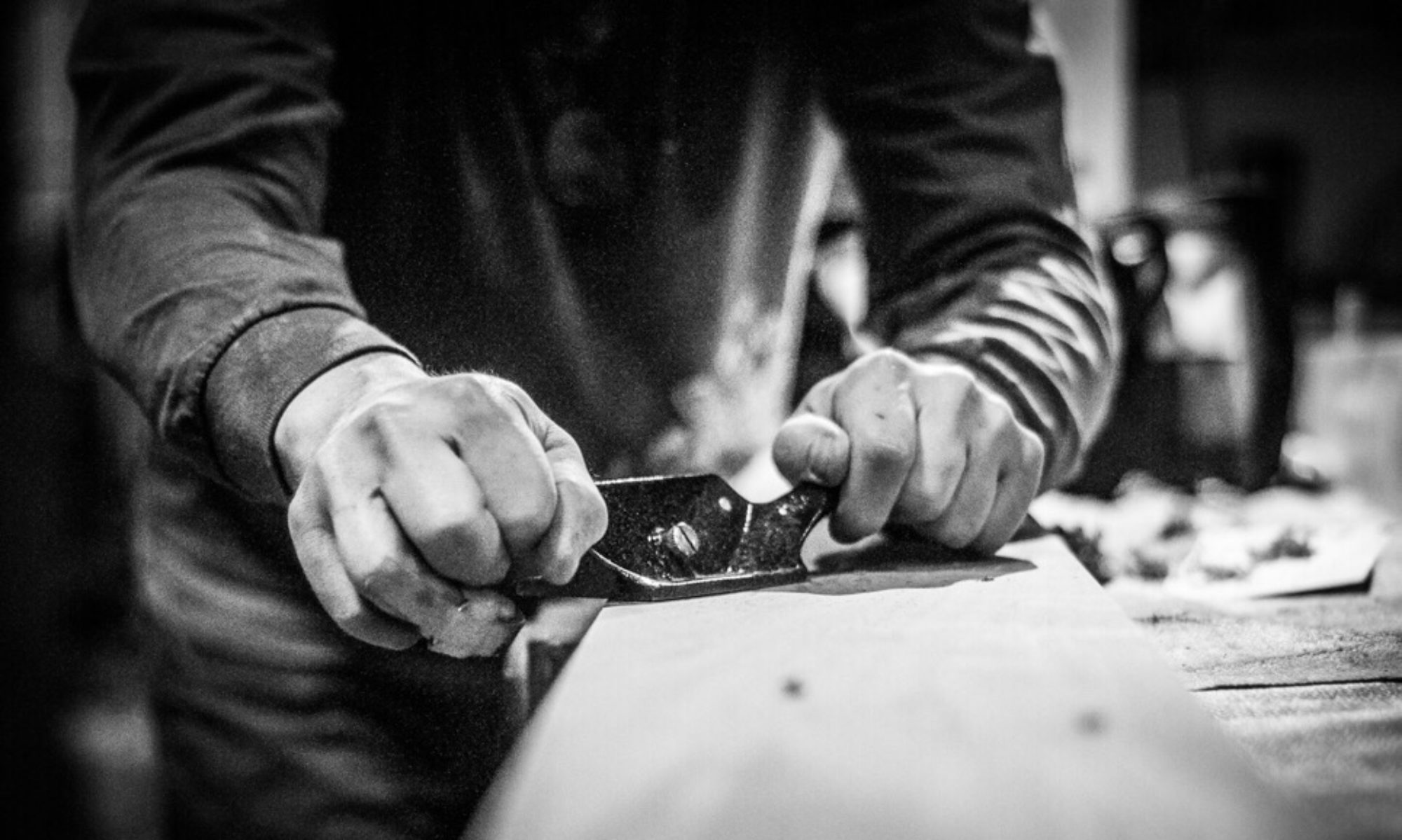When I choose the next piece of furniture to make, it needs to provide a new challenge. This ensures I’ll never get bored, but it’s also a strategy for mastering craft of furniture making more quickly. Having started only recently and in the middle of my life, I feel the pressure of having a long way to go and a limited amount of time to get there. Some people might think that continually raising the bar would be daunting. For me it’s motivational: how cool would it be if I actually pull this thing off? I decided on Garret Hack’s bedside table from Fine Woodworking #253.

Garrett Hack’s bedside tables are unconventional and didn’t appeal to me at first. Typical bedside tables provide plenty of storage by being boxy. Hack’s elegant tables have long legs and two small drawers. They don’t have much storage, but they sure are beautiful. A search of Fine Woodworking turned up another table by Micheal Cullen of the more typical form – a case with a drawer and shelves. I went back and forth between the two but decided on Hack’s table because it’s significantly more challenging. While I would have enjoyed making Cullen’s table out of walnut with its housed mortise and tenons, Hack’s provides more lessons. The article even says right under the title that it will “challenge your skills”. I didn’t realize how true this would be.

The first challenge of this table is that there are no plans available to purchase. As the builder, you have to make do with what’s in the article, which includes an exploded view, a front and side view, and some cross-section-type views. Even with these detailed instructions, the readers are left to figure out some things on their own. It doesn’t show you how to make the drawers – it assumes you already know how. Having taken Michael Pekovich’s Table From a Single Board workshop at the Connecticut Valley School of Woodworking, I don’t feel completely lost. There I built a similar table with the sides tenoned into mortises in the legs, tenoned bottom drawer rail, and a dovetailed top drawer rail.
Even with full-sized plans the table offers challenges, the foremost of which are the angles. The legs are splayed at 92.5 degrees and this means angled tenons for the drawer rails. Not only are they more difficult to make, but more difficult to keep track of. I thoughtlessly cut one of the tenons on the bottom drawer rail angled in the wrong direction. If I had marked both sides of the rail before cutting the tenons, I would have been able to quickly inspect them and discover the error. I’m making two tables, and unfortunately I did this on both of them. My solution was to glue a patch onto the tenon and cut it so that it was angled in the correct direction. The lesson here is to fully mark out the piece before cutting. It allows you to see the whole picture.
In a future post I’ll cover more aspects of the table including inlaid feet and drawers with angled fronts.
